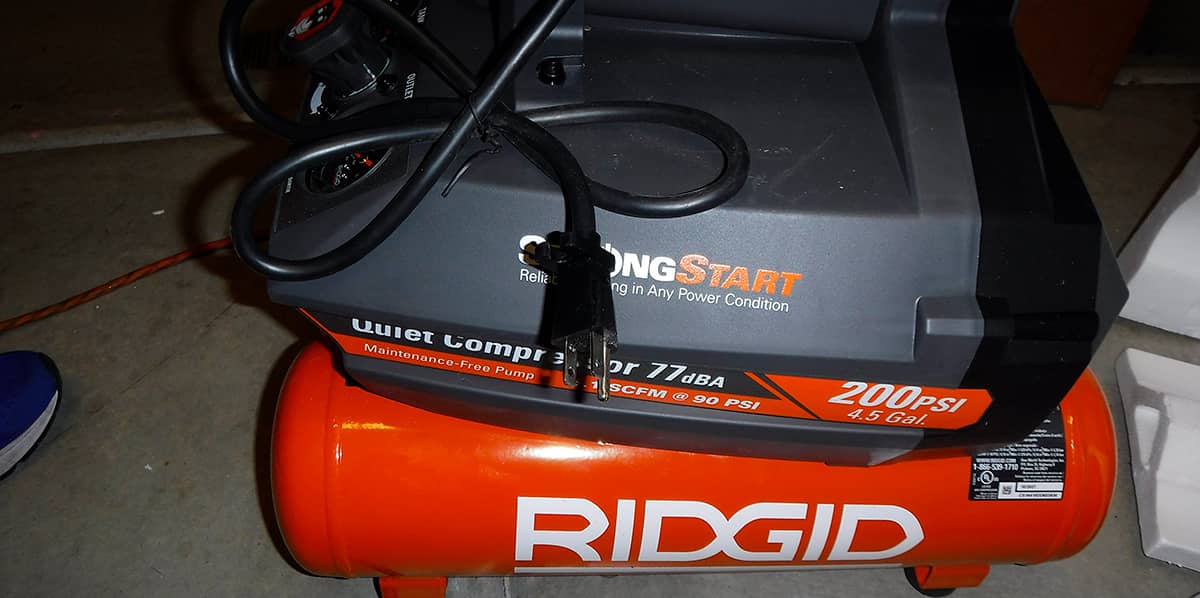
Ridgid R0230 Video Review
Ridgid Air Compressor FAQ
Before deciding on a certain size of this device, clarify the following points:
– Purpose. High-scale and long-lasting projects like sandblasting usually require a powerful air compressor with a large tank to work without interruptions. The basic model with a 1-gallon tank is enough to keep your bicycle tires sound.
– Area and infrastructure. Larger tank and more power usually mean more space taken by it. The big units might become a nuisance in a narrow garage. Besides, the models with high motor power and CFM number might require an extended power supply (up to 24V). There are also devices working on gasoline, as an option for places without electricity supply.
– Portability. Bulky multi-gallon air compressors are heavier and difficult to move around while ensuring constant airflow as a stationary option.
In the majority of the air compressors, the piston technology is implemented. Described simply, it’s a cylinder with the piston and two valves, one for air intake and another for discharge. The piston activated by the motor moves creating a vacuum for sucking the air from outside and creating the pressure within the cylinder. Once the pressure reaches the programmed level, the outwards valve lets it out creating airflow and feeding the connected tool or inflatable object.
The basic models of this device might not feature a tank. However, in most of the products, the air is stored in the special compartment, while the pressure is regulated by the system of sensors and switches. This allows the motor to get activated with the pressure downfall and save energy if the pressure is high.
1. For instance, if you have the Ridgid air compressor or a similar one, install it on a flat stable surface, its power switch being in the “Off” position. Ensure the power cord and the air hose are enough to reach the power source / the purpose tool. If the compressor requires oil to operate, check if the oil level is above minimal.
2. Insert the air hose to the compressor and connect to the purpose tool / object.
3. Connect to the grounded outlet with an appropriate voltage.
4. Check the safety valve releasing it for a while. You should hear an air hiss.
5. Switch on the compressor and fill the tank until the pressure needle becomes stable.
6. Regulate the pressure to fit the tool requirements.
7. Start using the tool.
